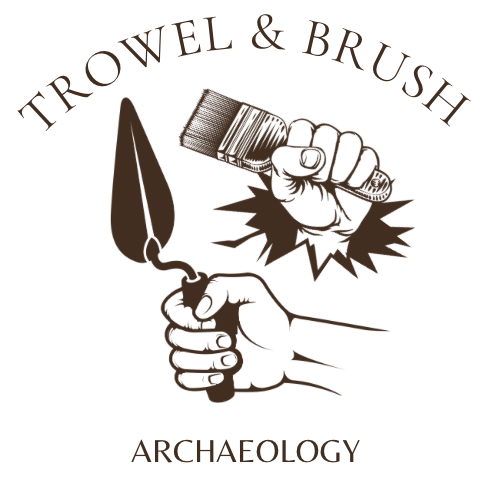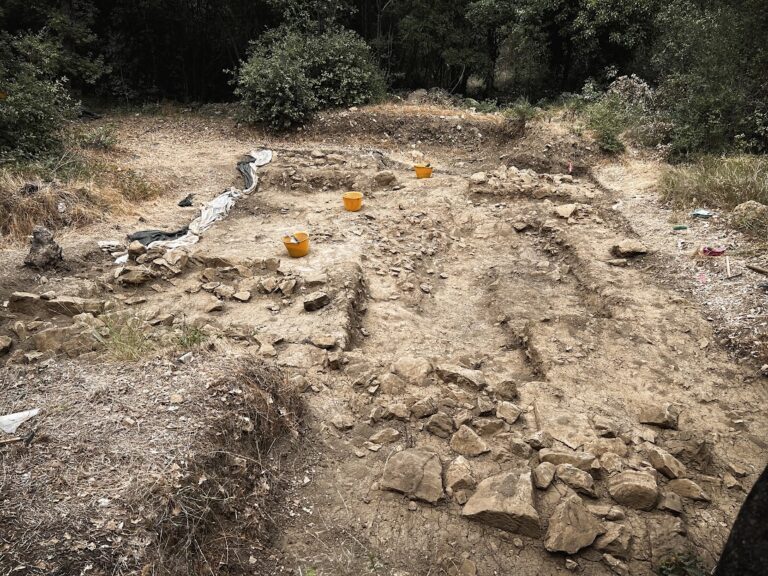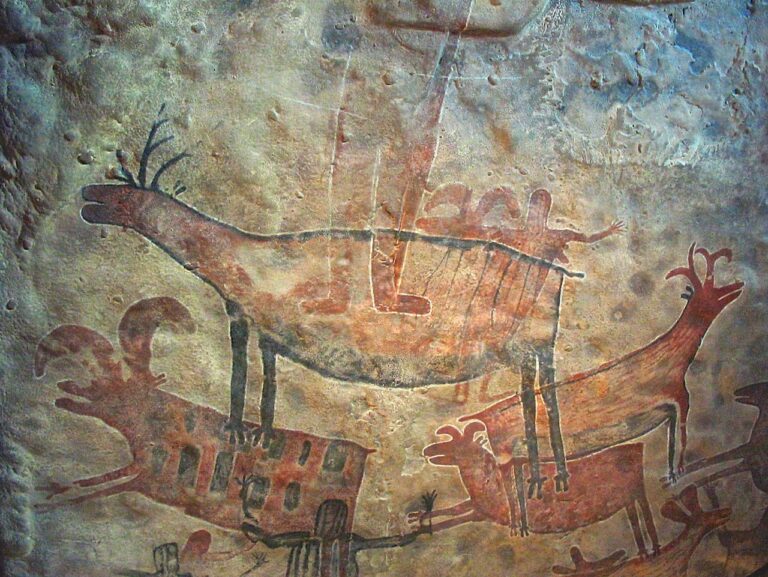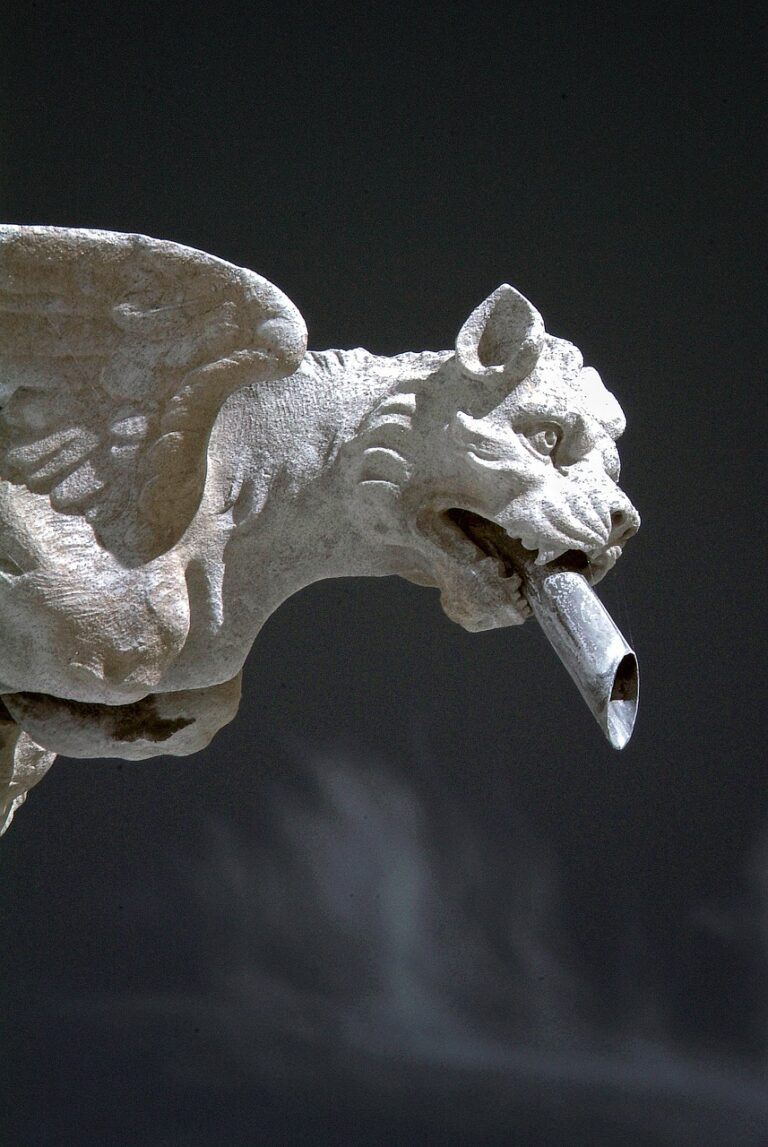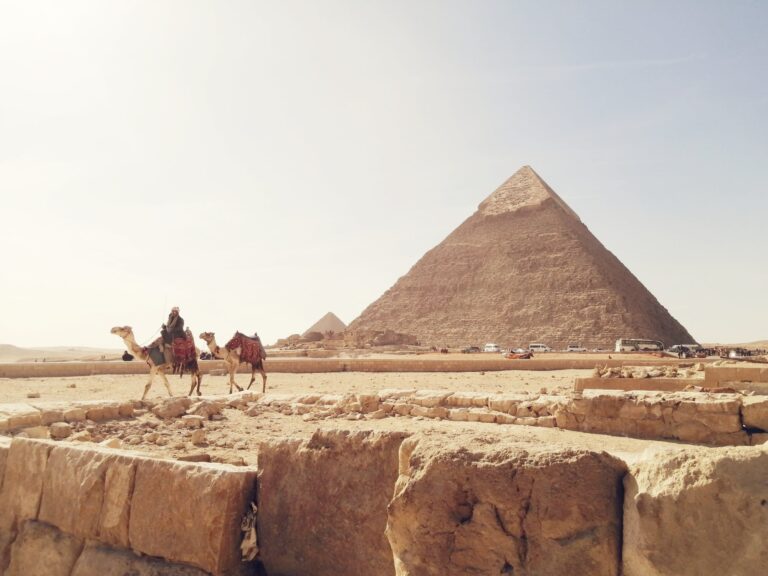Food and Drink in Italian Antiquity
Throughout human history, food and drink have been vital for survival and have also played a significant role in social, religious, and political life.
Italian antiquity, specifically the period covering the Etruscans and Romans, provides a fascinating lens through which to explore these elements.
The ancient Italian gastronomic landscape was an exciting blend of local and exotic ingredients, complex dishes, and lively feasts.
*Scroll for recipe*
The Etruscan Foundation
Before Rome came to dominate the Italian peninsula, the Etruscans flourished in central Italy. The Etruscans were agriculturalists and had a diet largely based on cereals like emmer wheat and barley. They cultivated legumes, olives, and fruits such as grapes, from which they made wine.
Hunting was a significant part of Etruscan society. They hunted game like deer, wild boar, and birds. The sea, lakes, and rivers provided a plentiful bounty of fish and shellfish, adding variety to their diet. They also reared animals, such as pigs, sheep, and goats, for meat and dairy.
Evidence from Etruscan tombs indicates that they engaged in communal feasting, a social activity vital to their community’s unity and status affirmations. Banqueting scenes often decorated their tomb walls, suggesting the importance of food in both life and the afterlife.
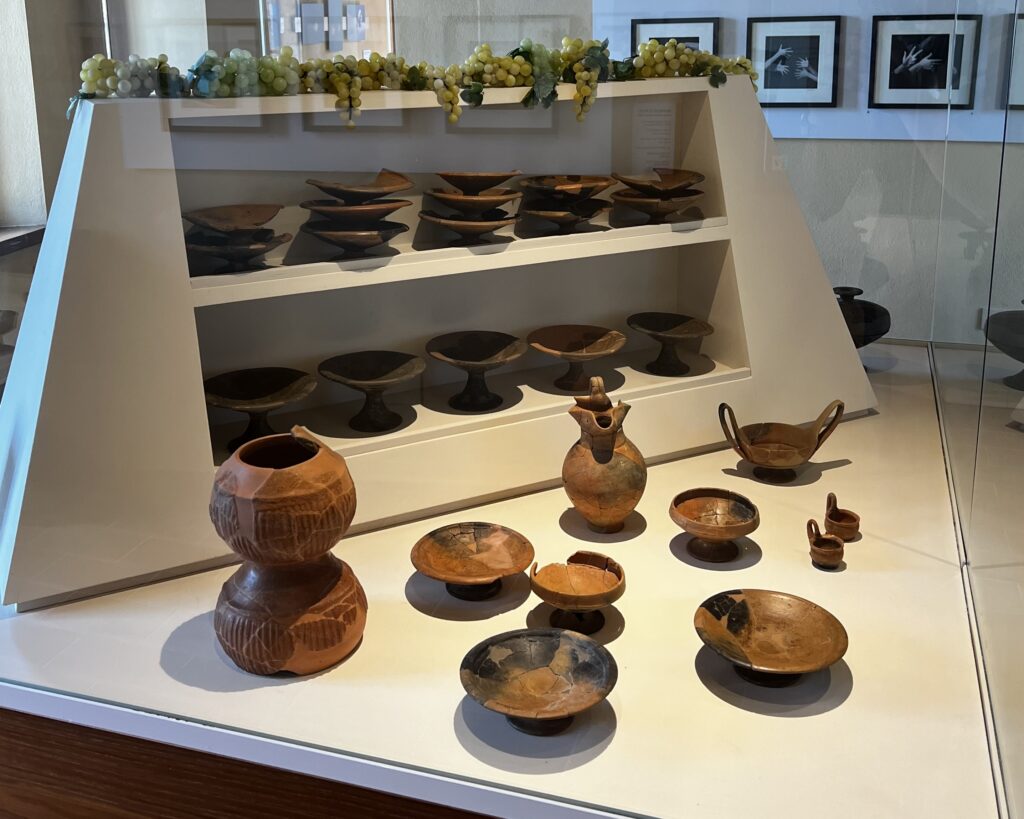
The Roman Revolution
With the expansion of the Roman Empire came an evolution in the culinary landscape. Romans built on the Etruscan’s agricultural foundations, focusing on grain cultivation, especially wheat for bread. Olives and grapes continued to be vital crops for olive oil and wine production.
The Romans were known for their complex and diverse diet. They had an array of fruits, vegetables, legumes, and nuts at their disposal, including figs, apples, cabbages, lentils, and almonds. Meat, however, was a luxury often reserved for the wealthy or for special occasions.
Exotic spices, condiments, and foreign foods became more available with the expansion of the empire. Garum, a fermented fish sauce, became a quintessential element in Roman cooking, enhancing the flavor of many dishes.
Roman society was characterized by extravagant banquets, particularly among the elite. These feasts served not only as a demonstration of wealth but also as a platform for political discourse. Guests reclined on couches, enjoyed multiple courses of food and wine, and were entertained with music, poetry, and philosophical debates.
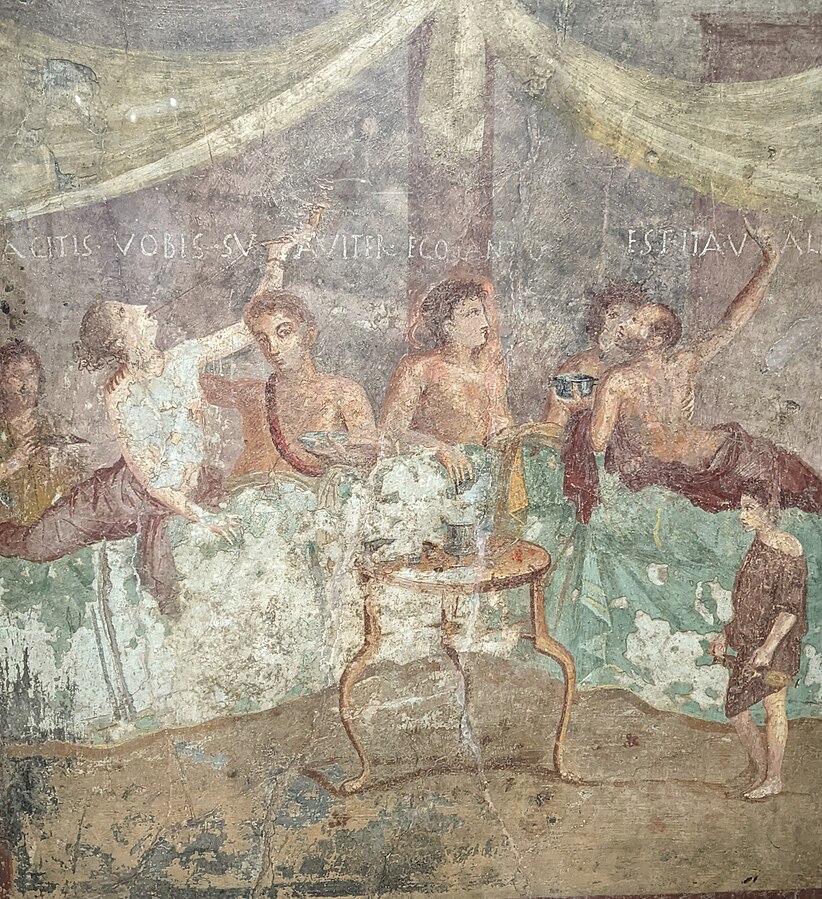
A Taste of italian antiquity: Pullum Particum (Parthian Chicken)
To experience a bit of Roman culinary history, try this recipe for Pullum Particum, a spiced, sweet, and sour chicken dish. This dish was described by Apicius, a Roman gourmand of the 1st century AD, in his cookbook “De Re Coquinaria“.
Ingredients:
- 1 whole chicken
- 1 tsp ground cumin
- 1 tsp ground coriander
- Salt, to taste
- Pepper, to taste
- 3 tbsp honey
- 60 ml (1/4 cup) white wine vinegar
- 2 tbsp garum (or substitute with soy sauce)
- 4 dates, finely chopped
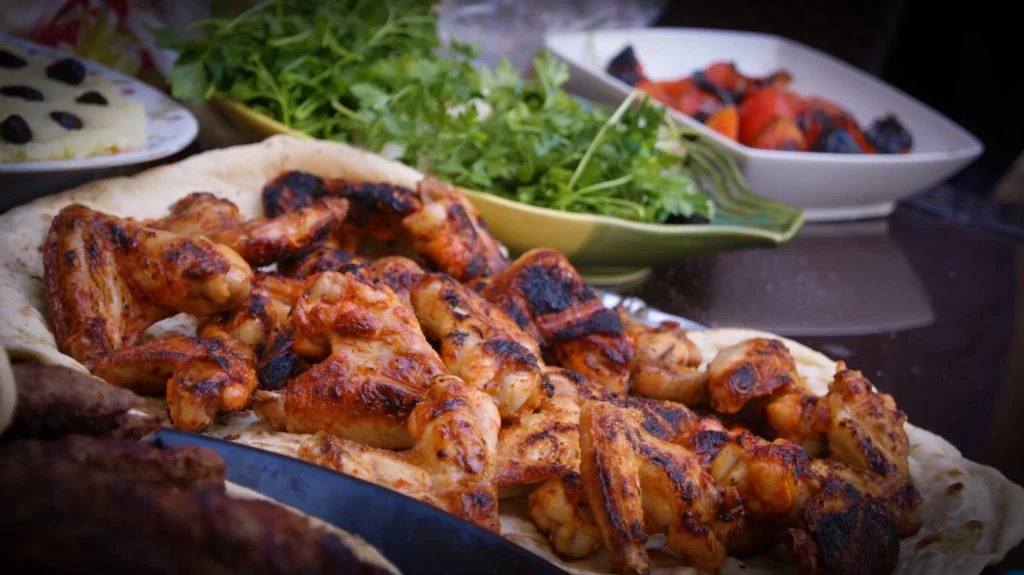
Instructions:
- Preheat your oven to 200 degrees Celsius (392 Fahrenheit).
- Season the chicken with the cumin, coriander, salt, and pepper. Place the chicken in a roasting pan and roast in the oven until the internal temperature reaches 74 degrees Celsius (165 Fahrenheit), approximately 1 to 1.5 hours.
- While the chicken is roasting, prepare the sauce. In a small saucepan, combine the honey, vinegar, garum (or soy sauce), and chopped dates. Simmer the sauce over low heat until it thickens slightly.
- Once the chicken is cooked, remove it from the oven and let it rest for 10 minutes. Drizzle the sauce over the chicken before serving.
The culinary traditions of Italian antiquity, spanning from the Etruscans to the Romans, provide a fascinating insight into their daily life, social dynamics, and cultural practices.
Their diets, evolving from simple agricultural staples to luxurious banquets, mirror their expanding cultural and political horizons.
Savoring an ancient dish like Pullum Particum isn’t merely a gastronomic experience; it’s a journey through time, connecting us to traditions that continue to influence modern Italian cuisine.
Ultimately, our exploration of Italian antiquity’s food and drink underscores how cuisine serves as a testament to human culture, transcending time and geography.
Check This out
“Fun Fact:Did you know that the Romans were food innovators and even had their version of a fast-food restaurant? These establishments were known as “thermopolia”. They were typically small shopfronts where hot food was sold over a counter, serving customers who were often lower-class citizens and travelers. Remains of these ancient fast-food joints have been found in several Roman cities, including Pompeii. So, next time you’re grabbing a quick bite, remember, the Romans were way ahead of the game!”
If this exploration of antiquity’s gastronomy piqued your interest, stay connected for more culinary journeys into the past by clicking the button below.

